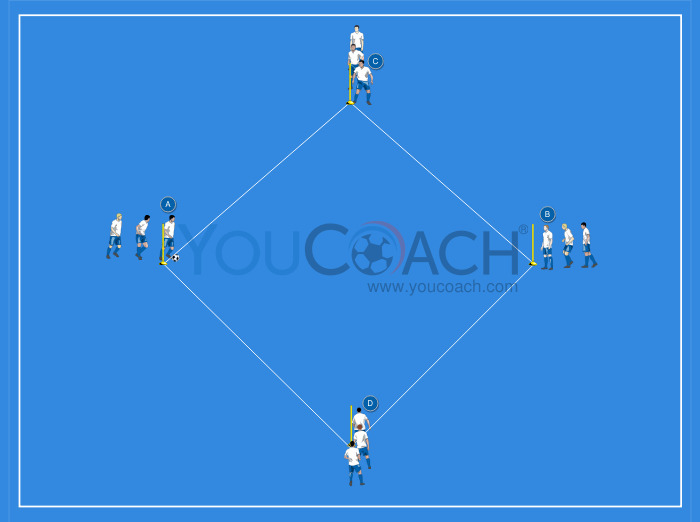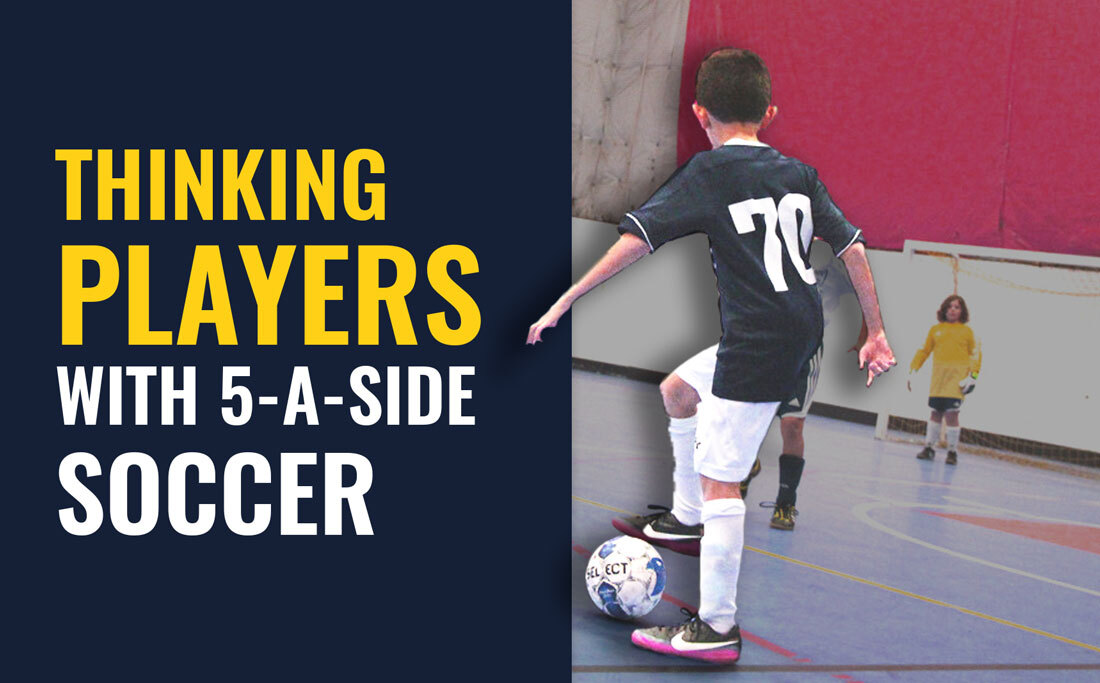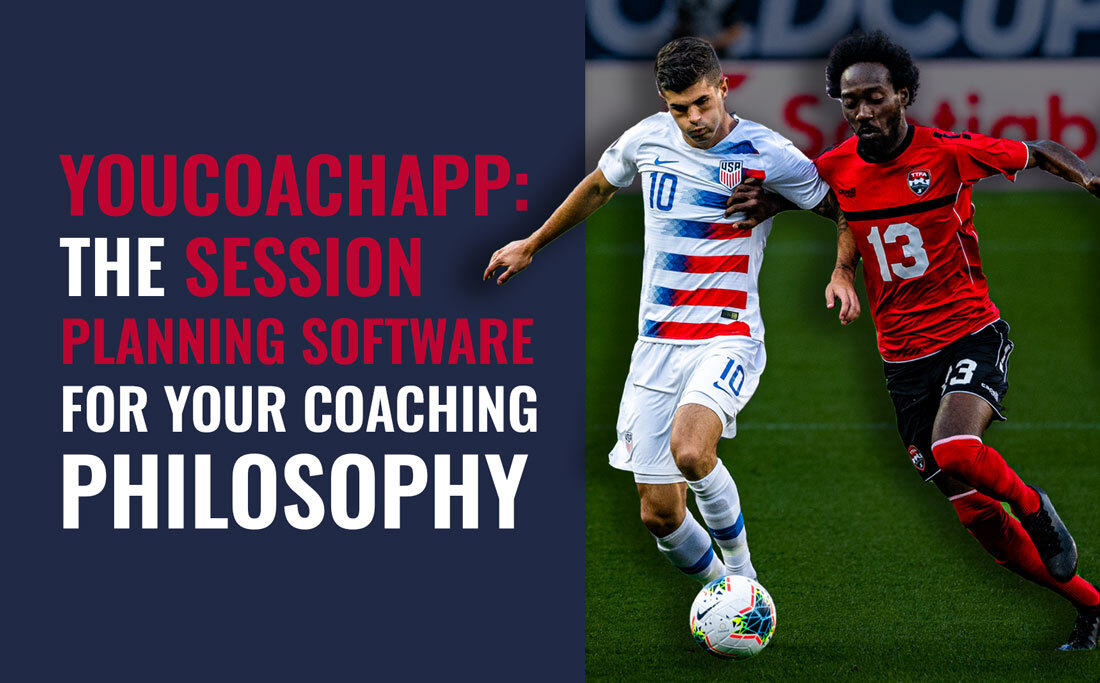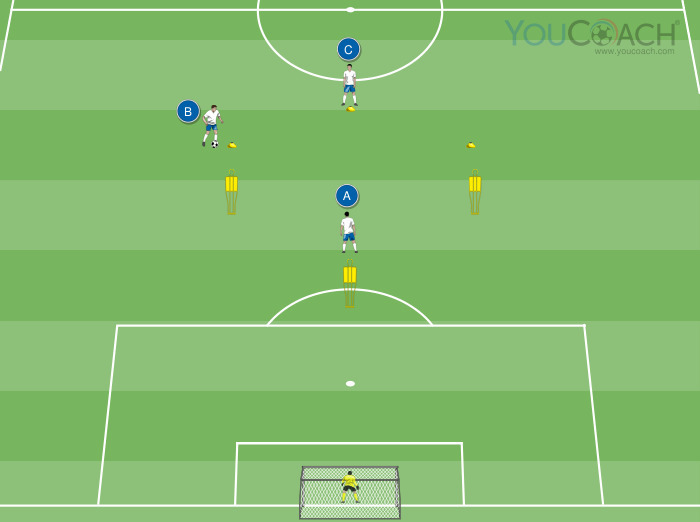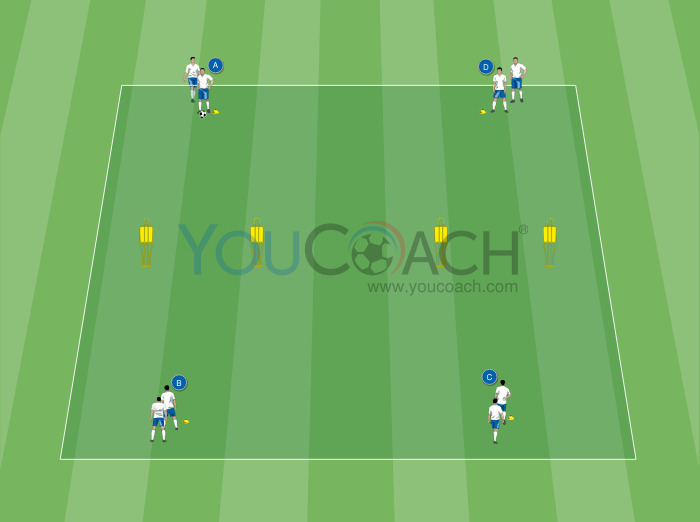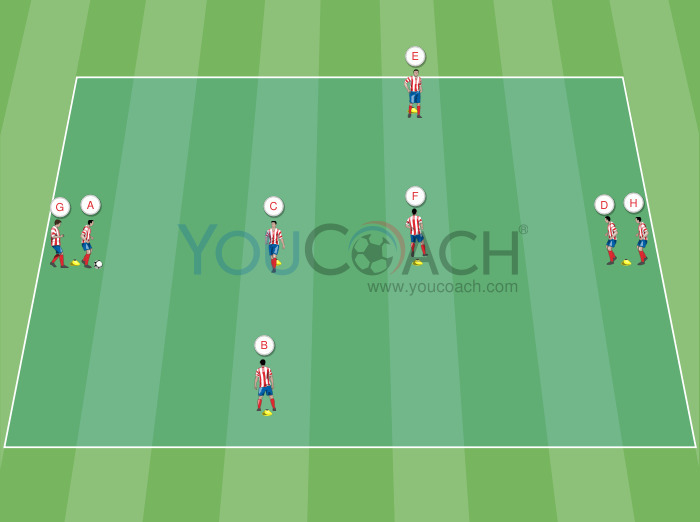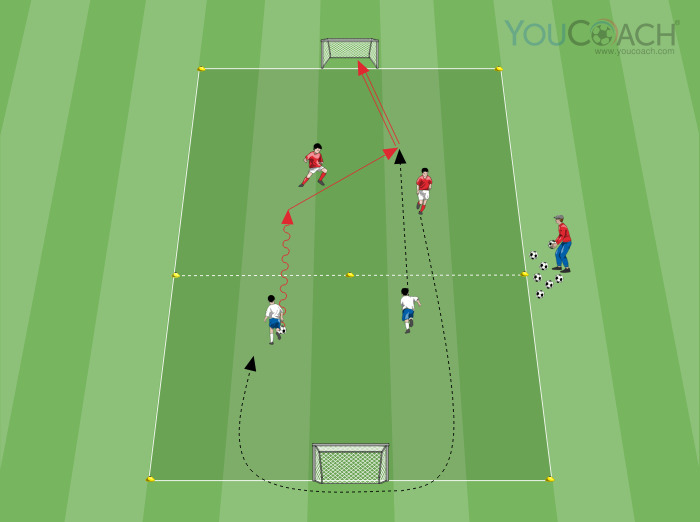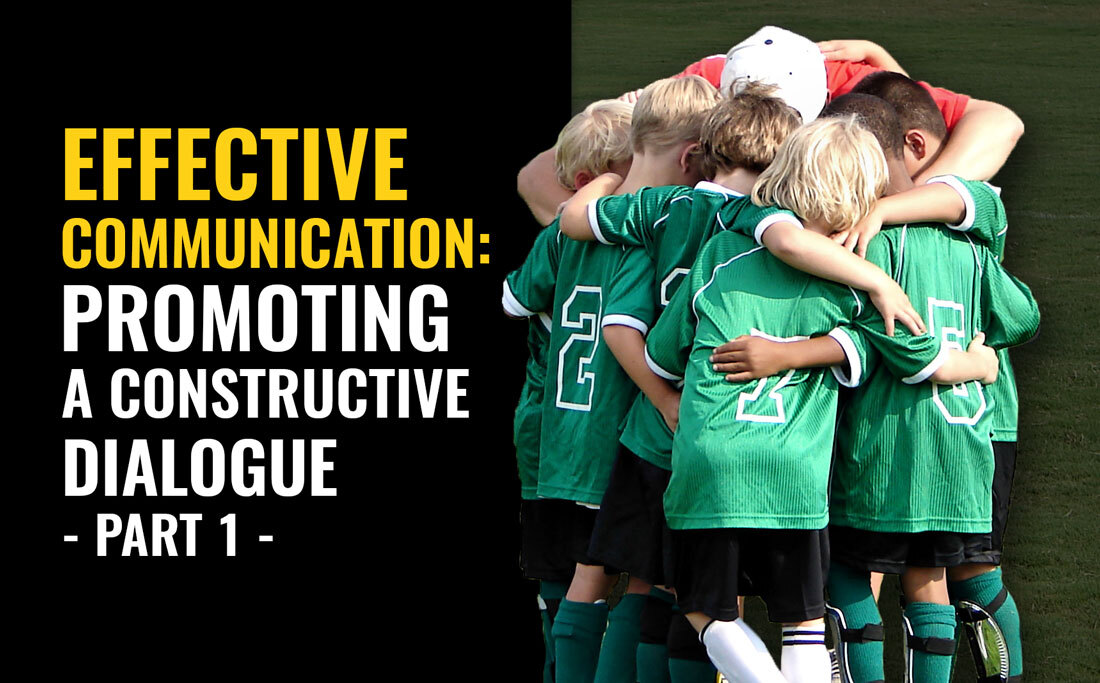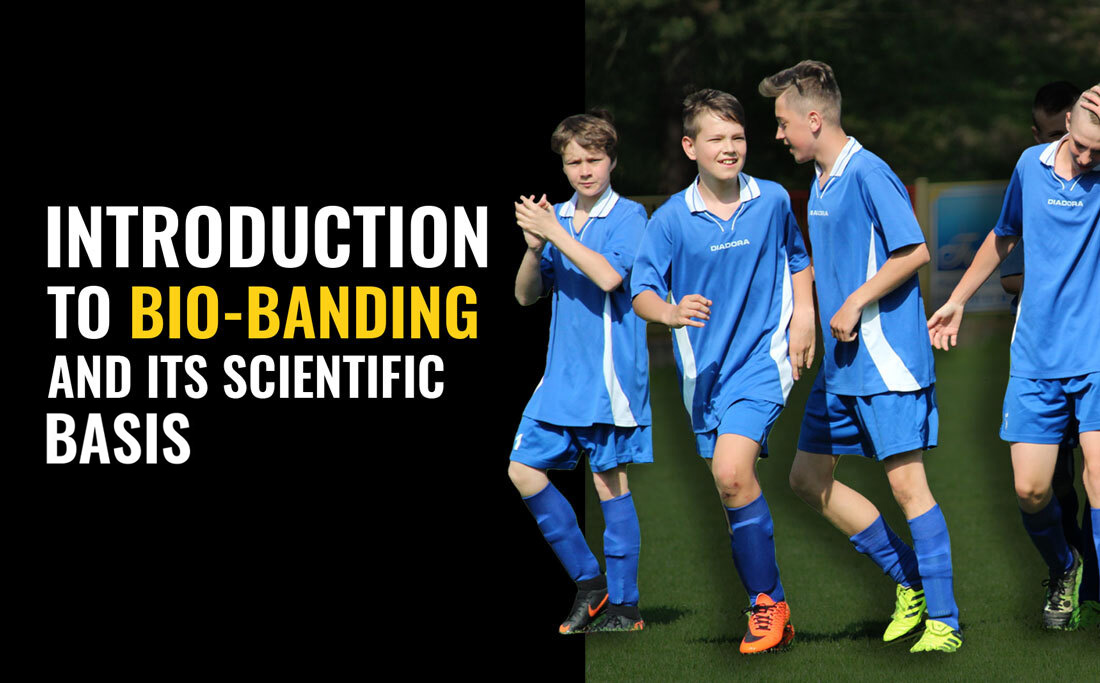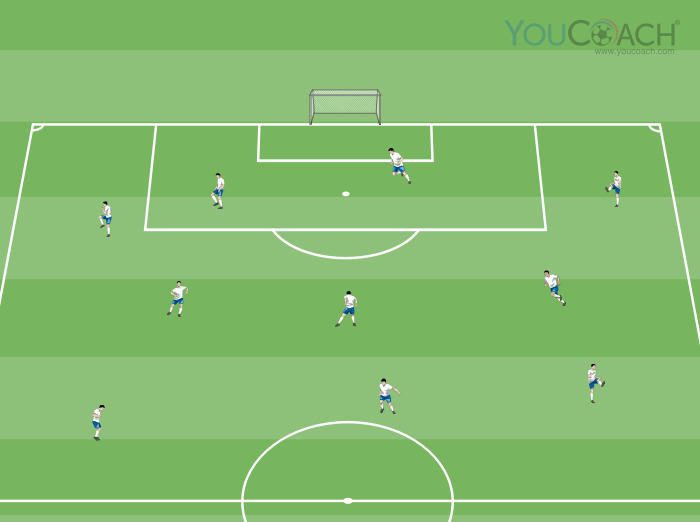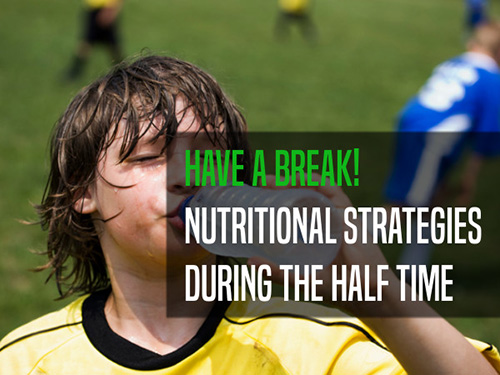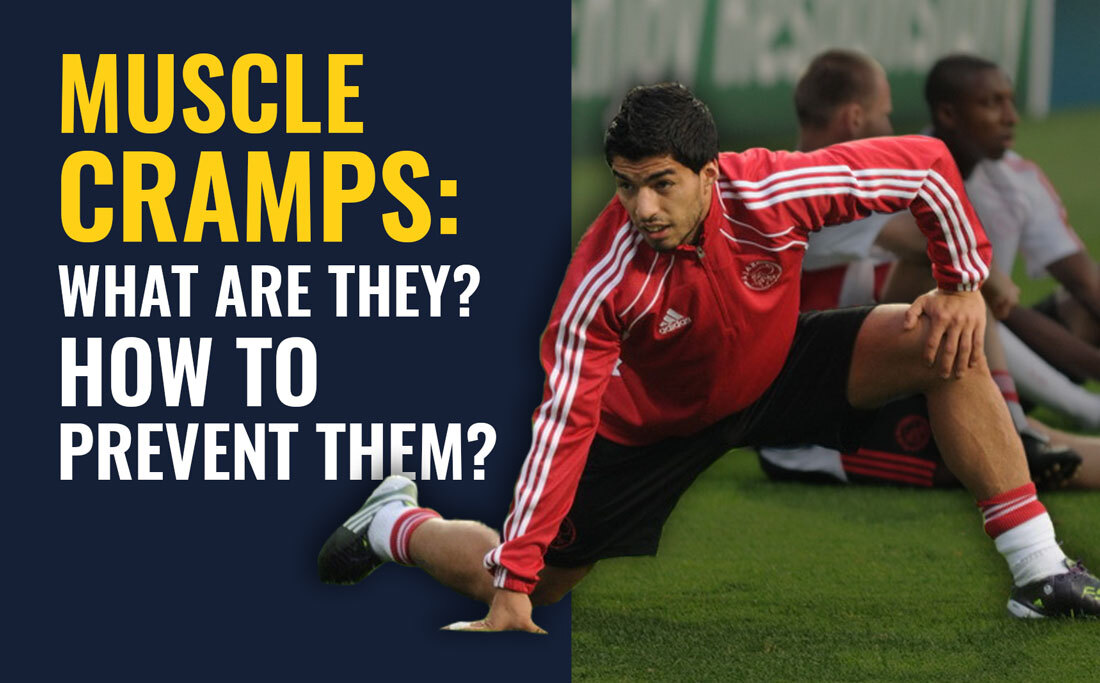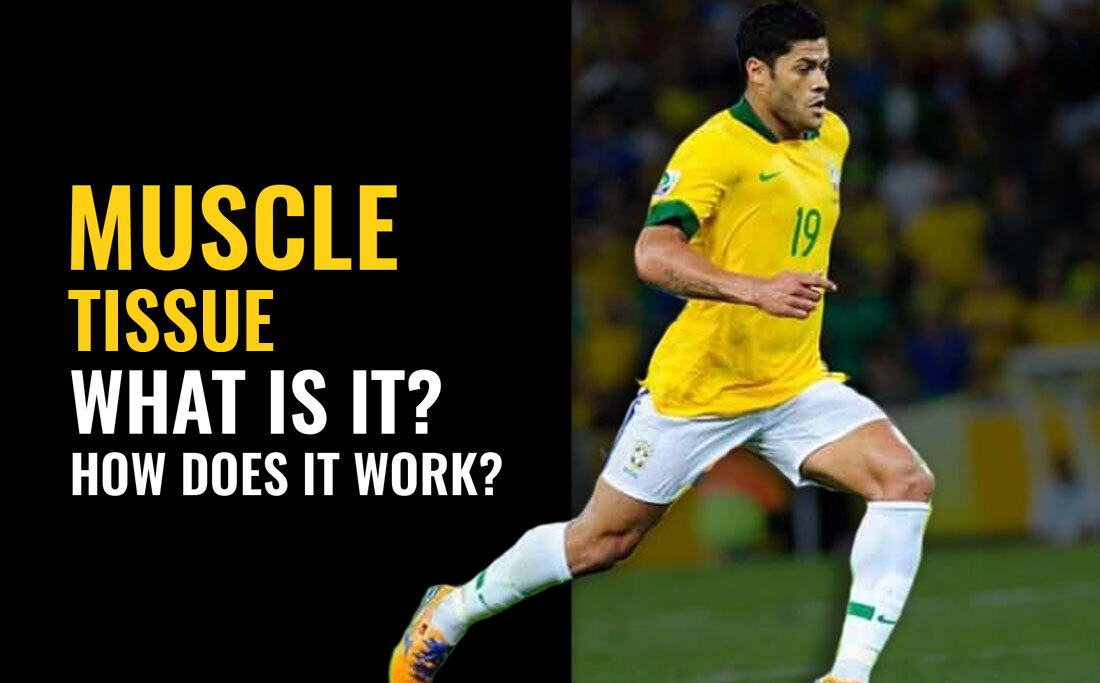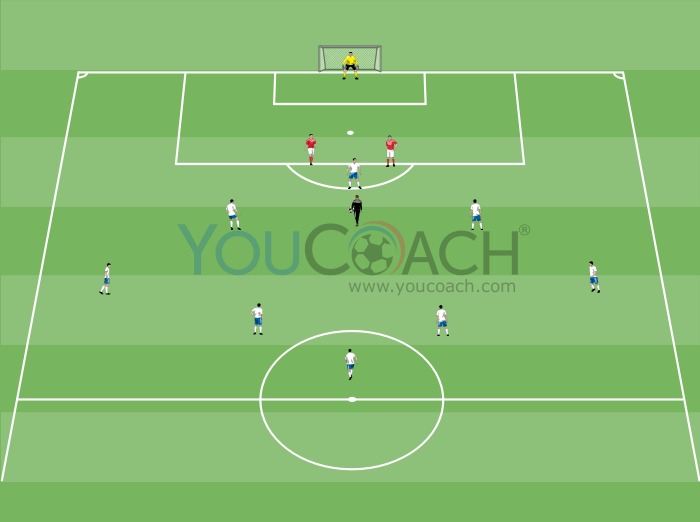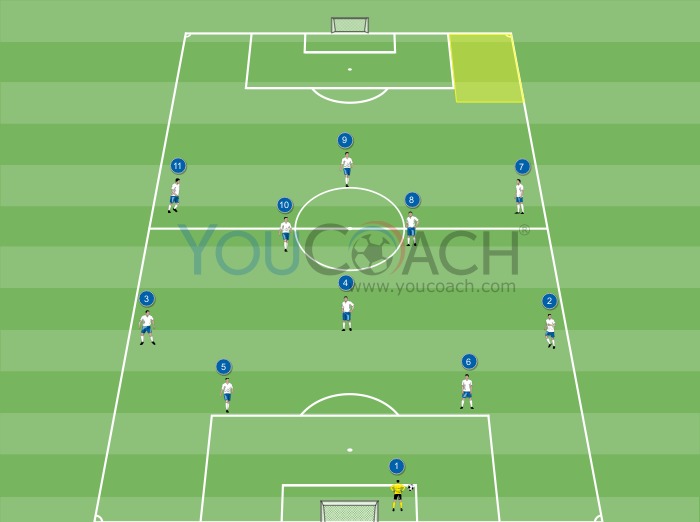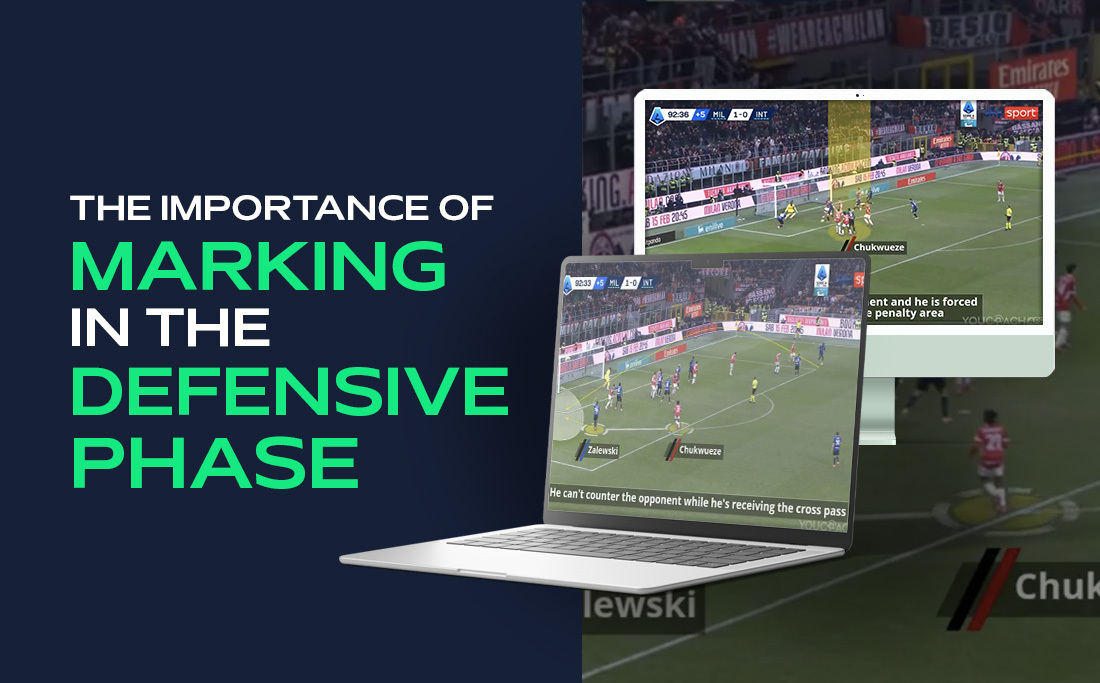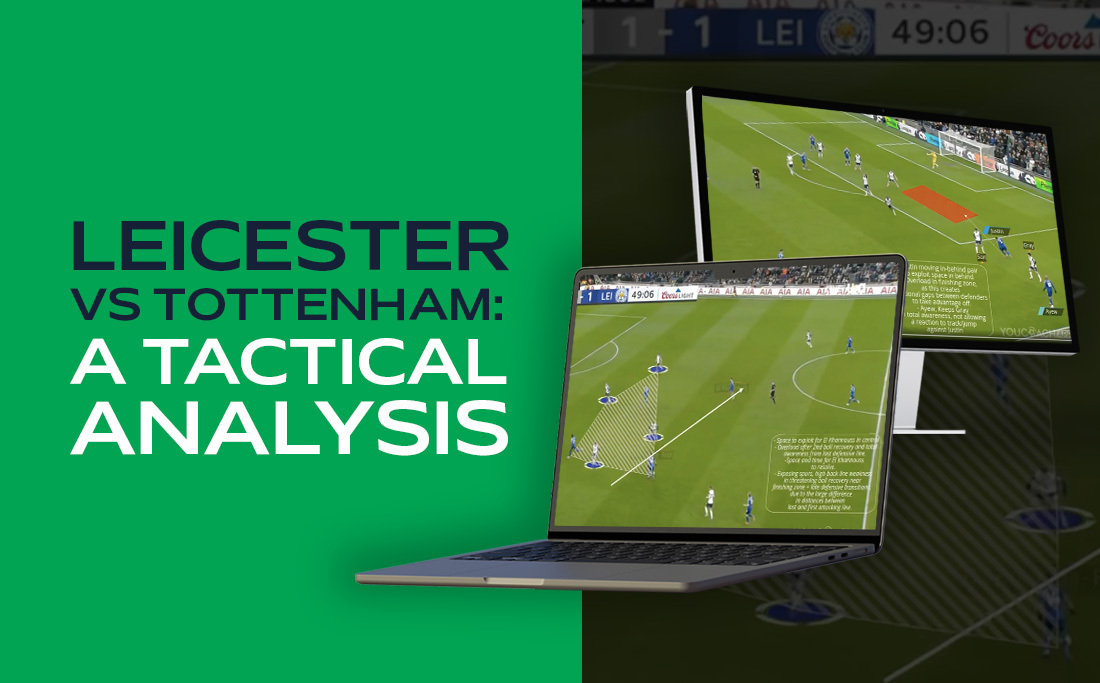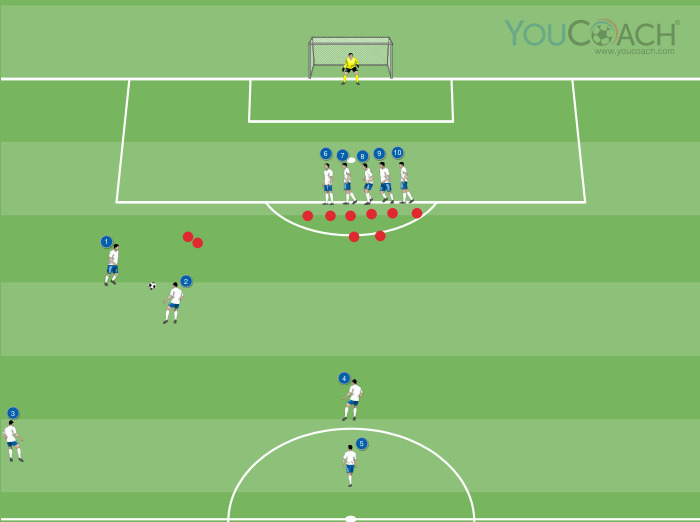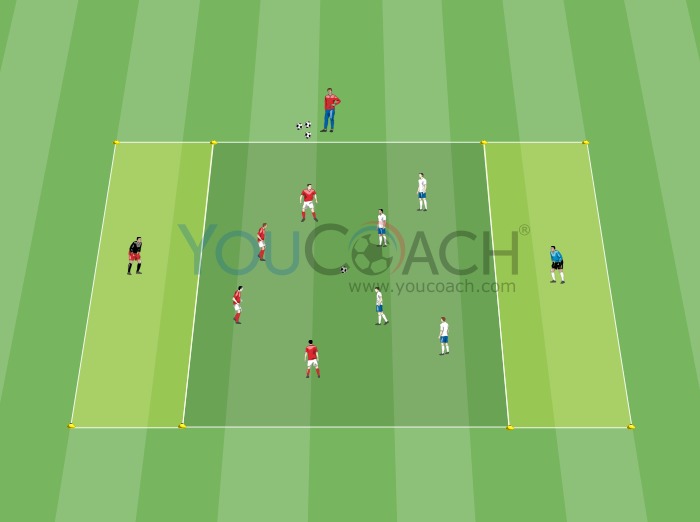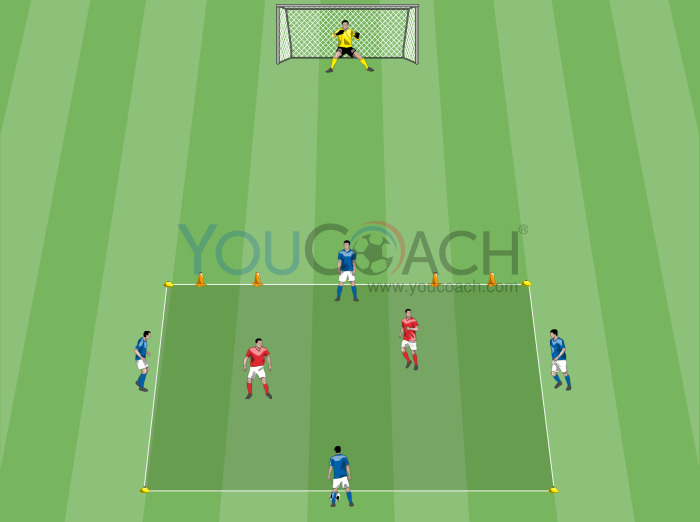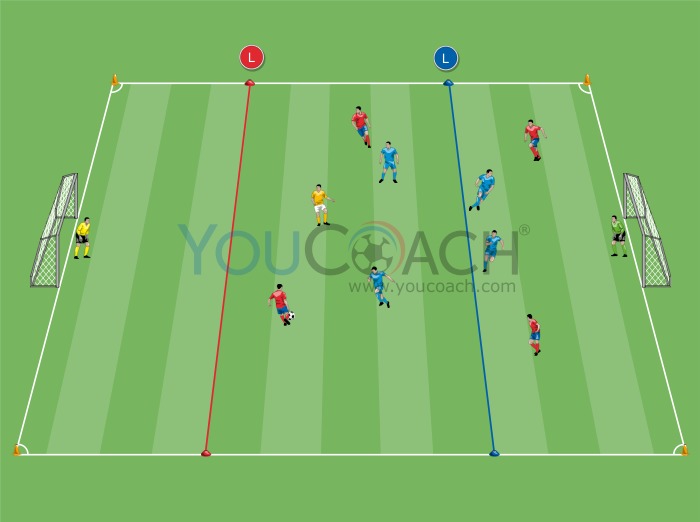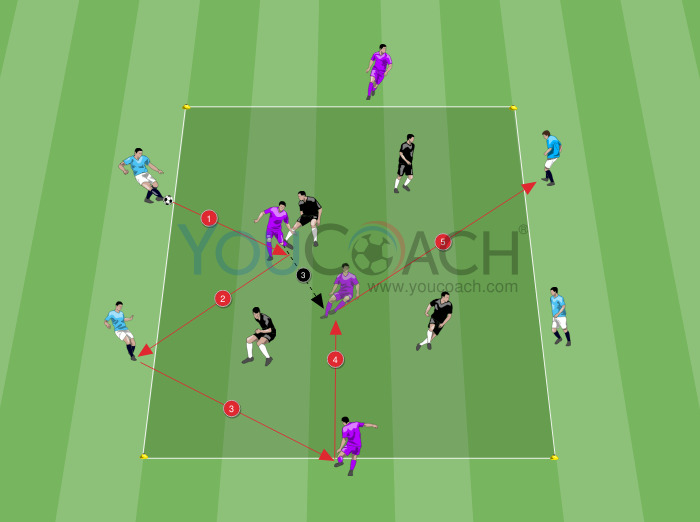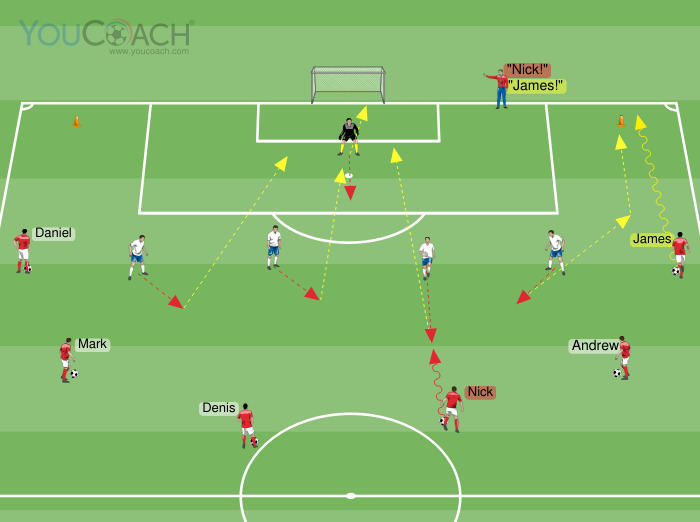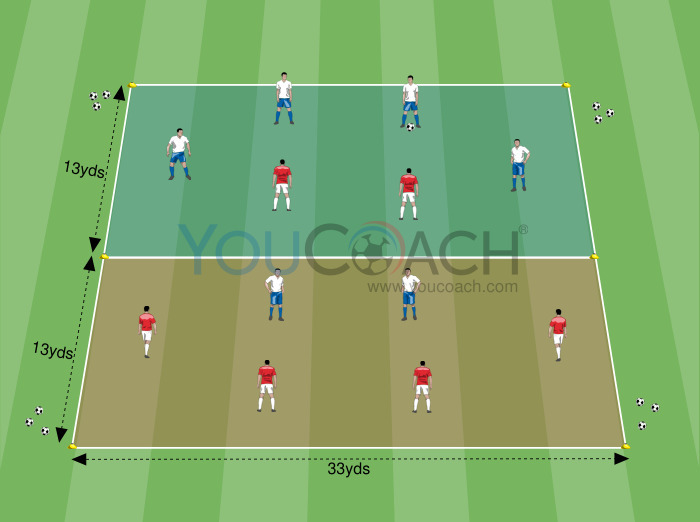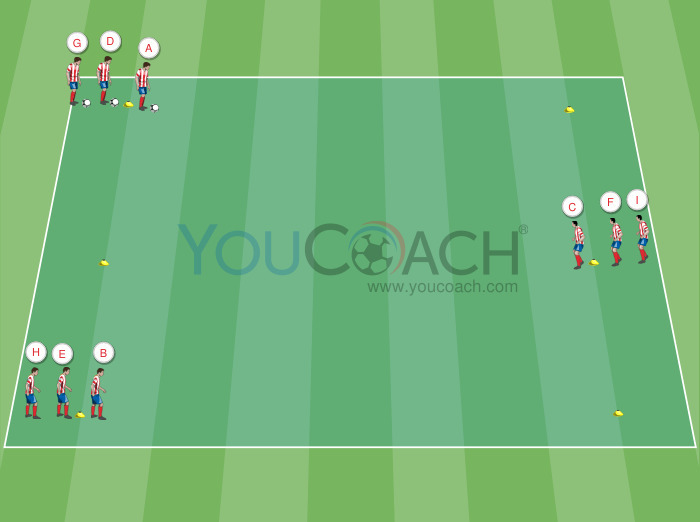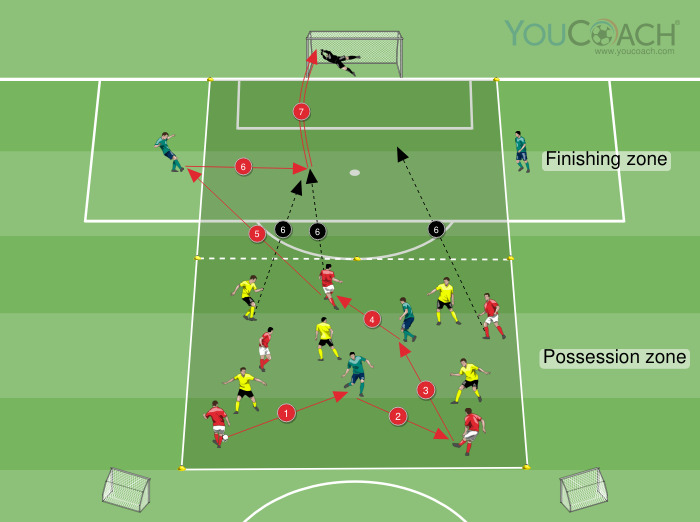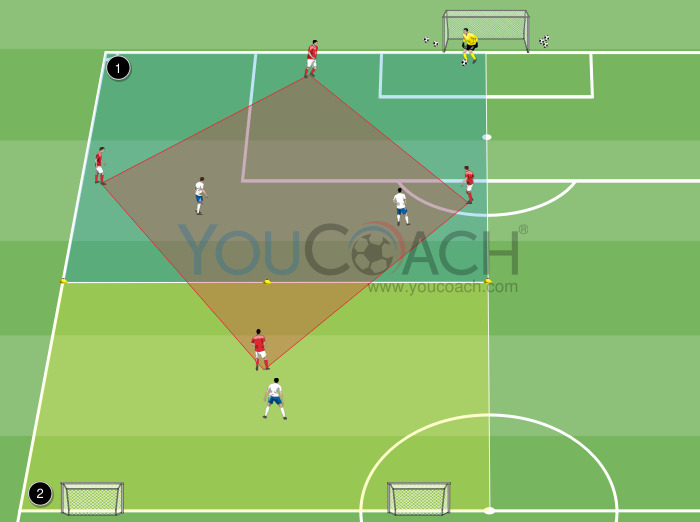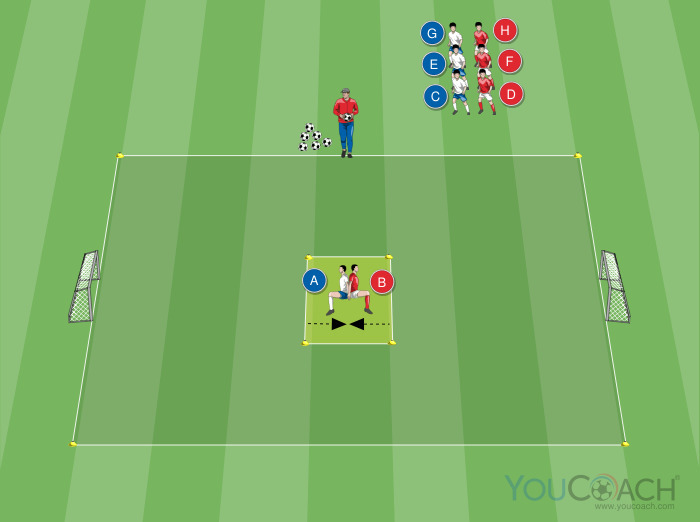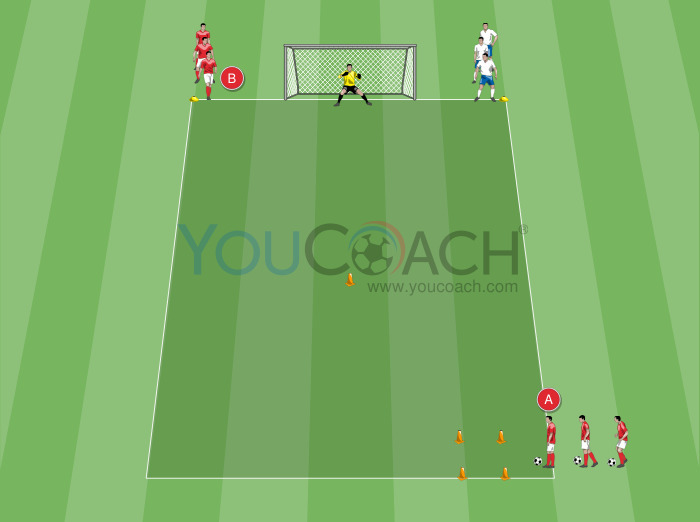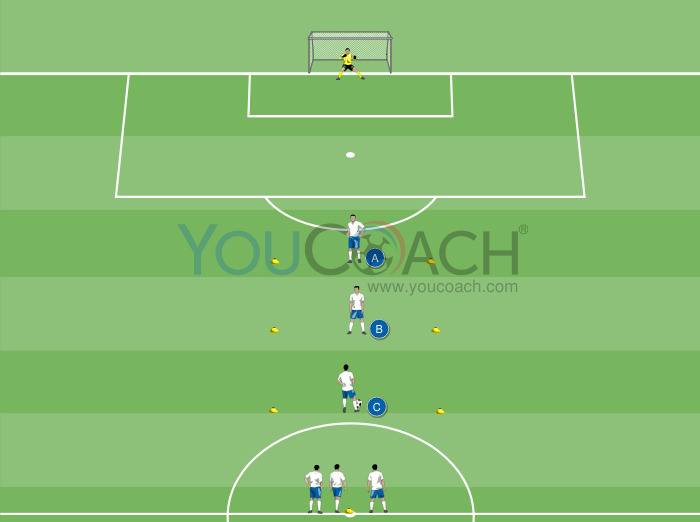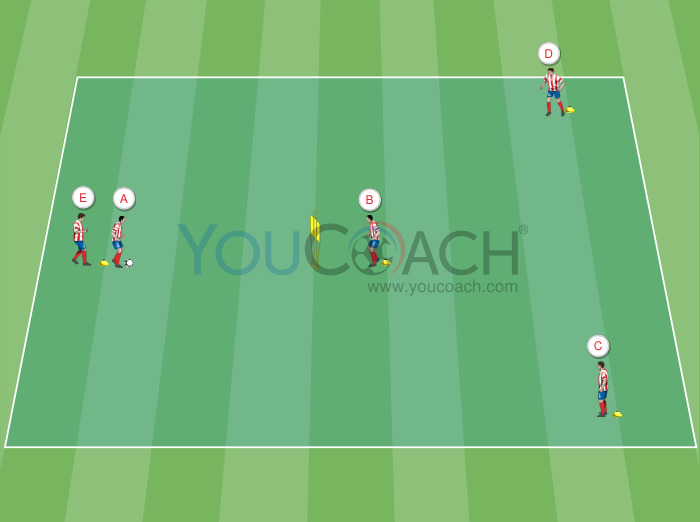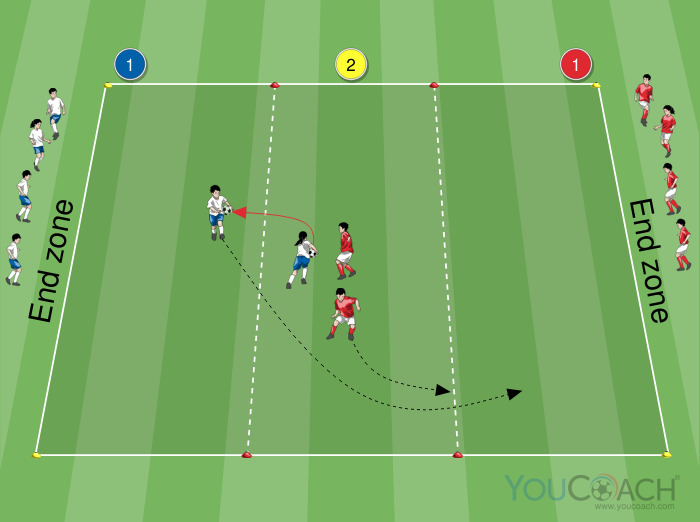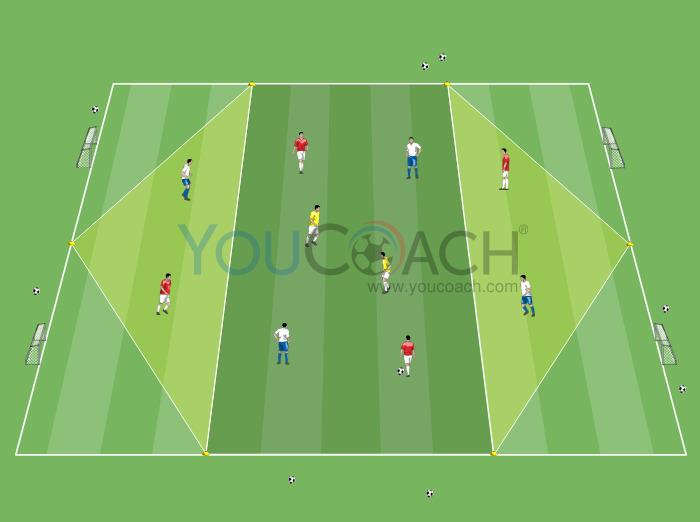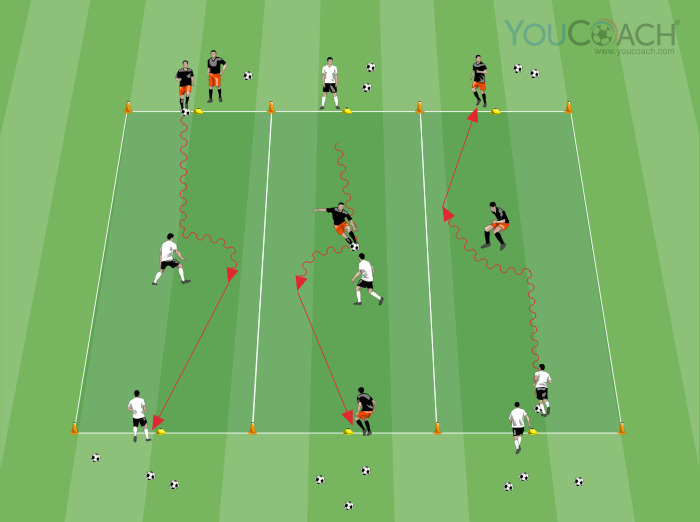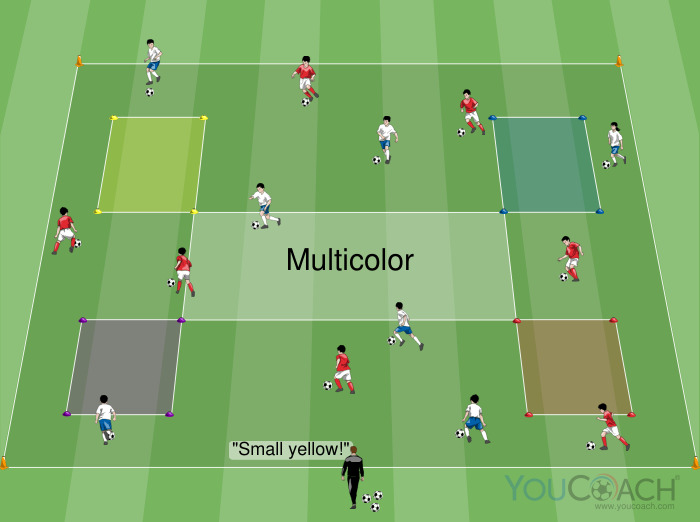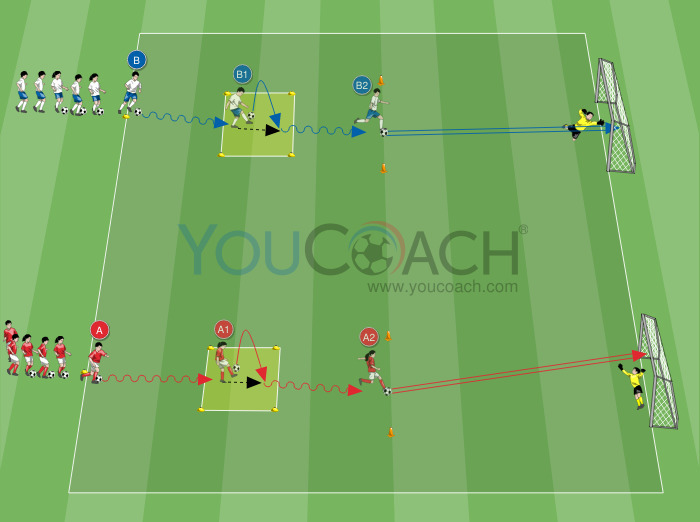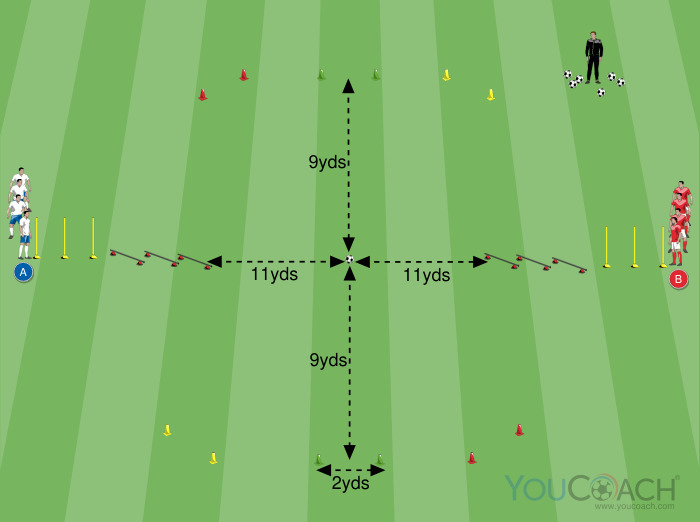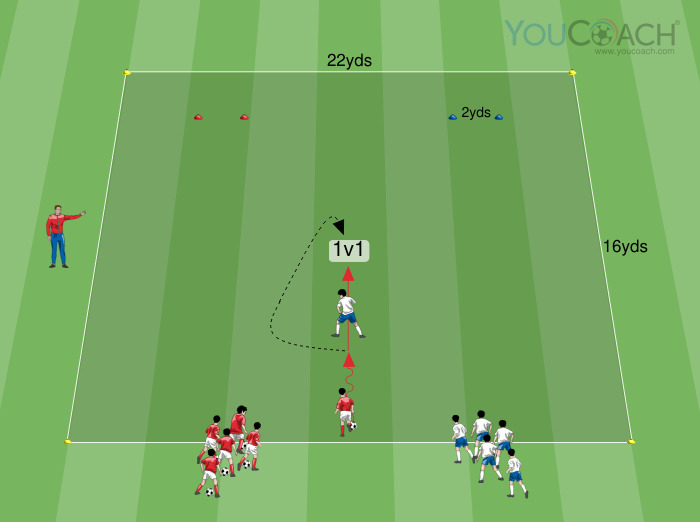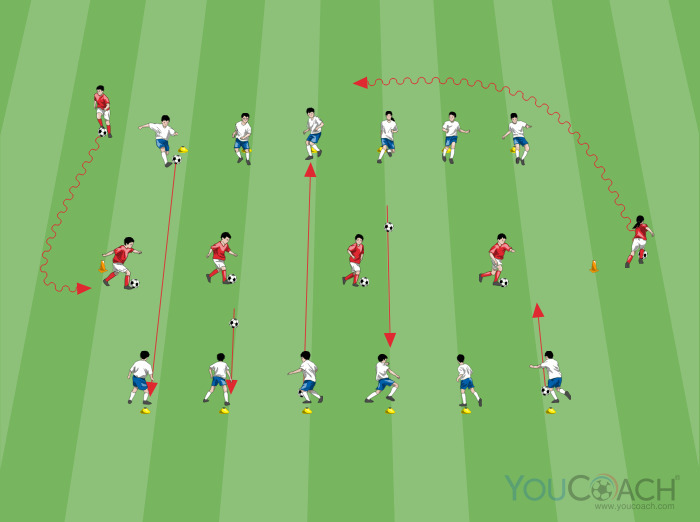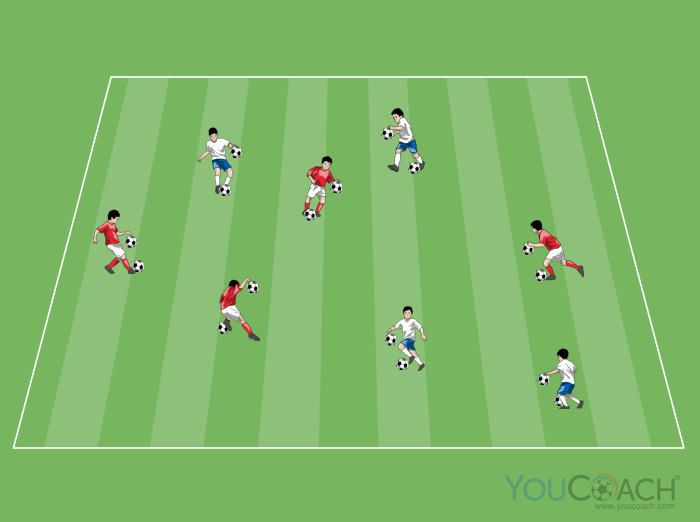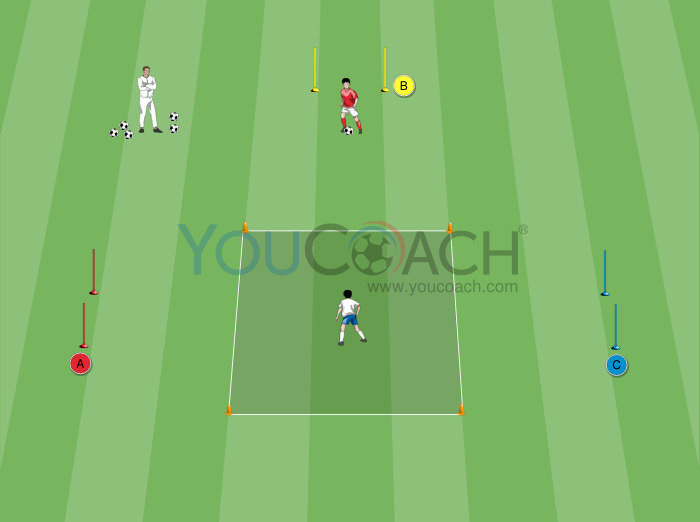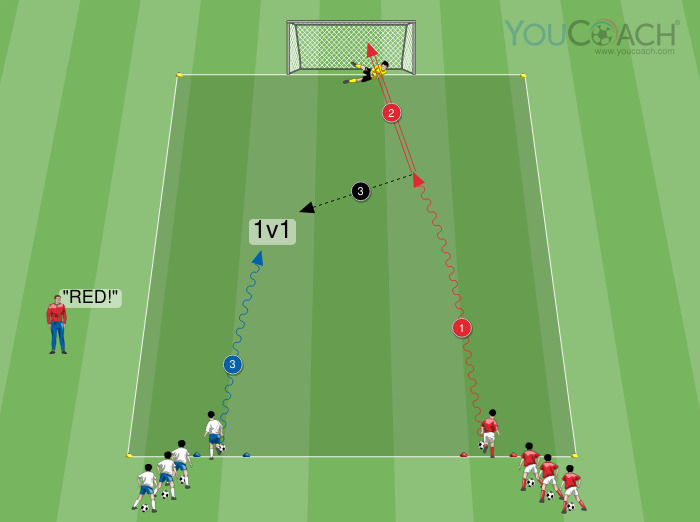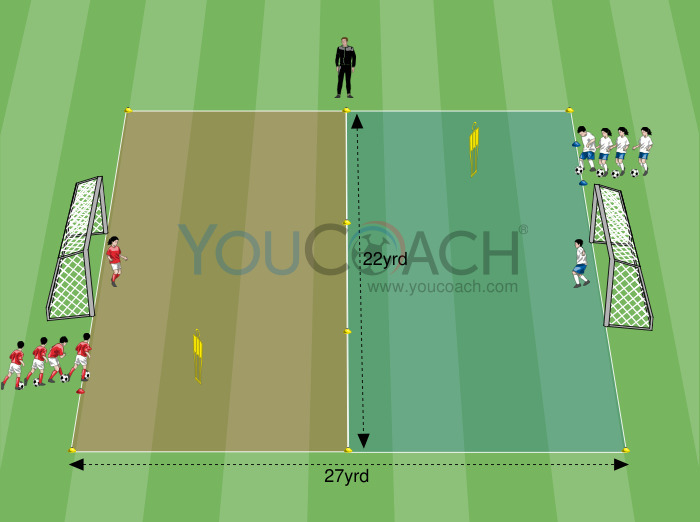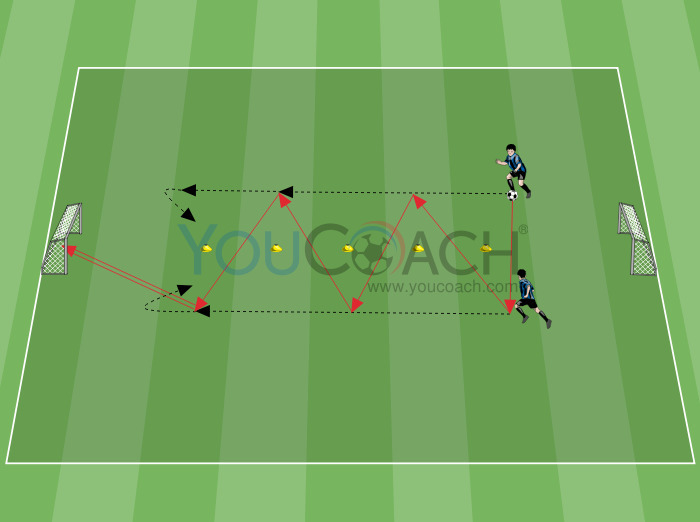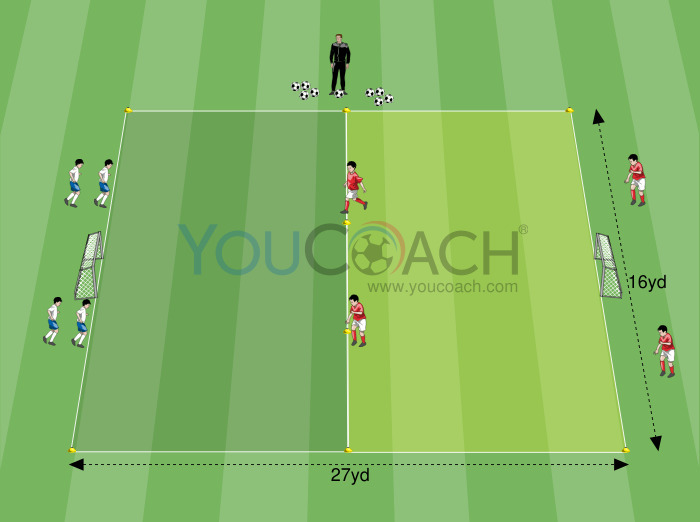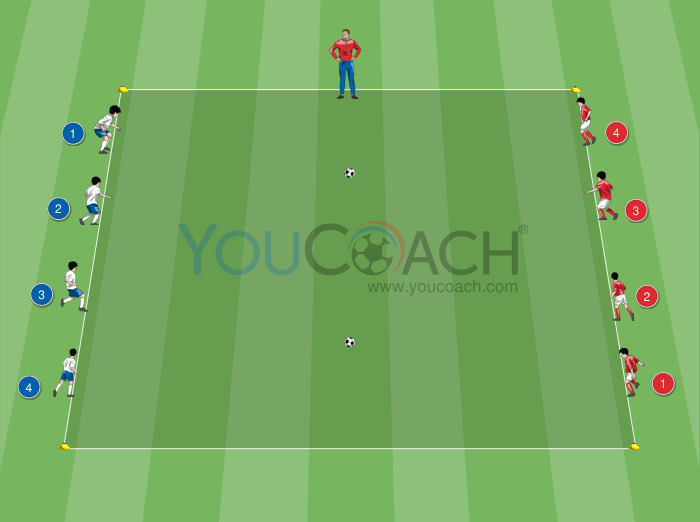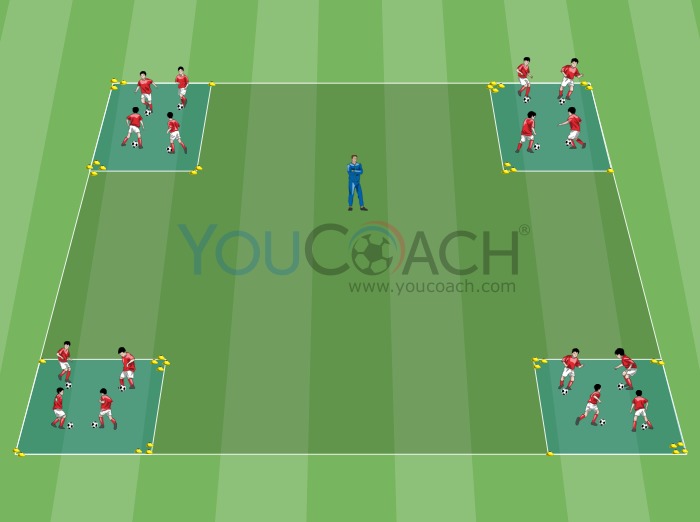Ball control: Observe and occupy spaces
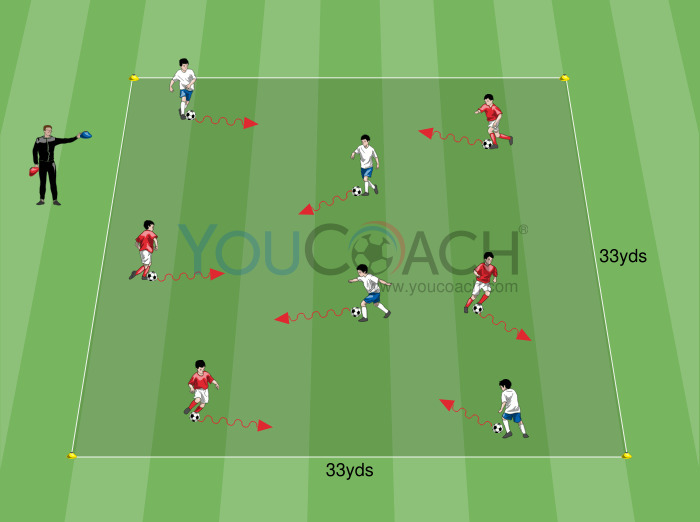
- Markers
- Vests
- Balls
- Playing Area: 30x30 meters / 33x33 yds
- Players: at least 8
- Duration: 12 minutes
- Series: 2 of 5 minutes each with 1 minute of passive recovery in between
| Summary | Secondary Objectives |
|---|---|
|
Exercise running with the ball and controlling it with differentiation and orientation skills |
Dribbling, Reaction time, Coordination, Awareness, Perception, Decision - determination, Concentration, Proprioceptive informations, Space-time differentiation, Visual perception, Vestibular information, Peripheral vision, Dribbling, Dribbling with changes in direction, Dribbling with feints, Ball control, Receiving and shielding of the ball, Cognitive |
Using markers create a 33x33-yard playing area. Within this square place 8 players, each with their own ball. The players are divided into two teams of 4 members each (red and white team in the picture). Depending on the players' abilities, the age group and the number of players available, increase or decrease the size of the playing area.
- Players must run with their ball inside the playing area freely
- On the outside of the perimeter of play, the coach stands with two different color markers (or jerseys) in their hands (red and blue markers in the picture)
- When the coach raises one color (blue in the picture 1), the players run with the ball and try to stay as equidistant from each other as possible (keeping their distances from each other), without crossing running trajectories while occupying the entire space of the playing area in a balanced way
- When the coach raises the other color (red in the picture 2), each player forms a pair with a player of a different color and performs everything that the player in front of them does: 4 pairs are formed (red and white player) in which there is one player leading the pair and the other one following at close distance trying to make changes in direction, feints, technical gestures that the other teammate performs
- Each time the pair is formed, always change the position of the person leading the pair

Picture 2
- Depending on the visual signal given by the coach, players run with the ball individually trying to stay equally spaced, or in pairs
- The signal given by the coach can also be auditory (for example, the two different phases can be associated with numbers)
- Players form fixed pairs with two elements of opposite color (one white and one red player). Each pair passes on a ball by moving around the field and trying to occupy the playing area in a balanced way without interfering with the other pairs. When the coach calls out one of the colors (red or white), the players called out (red in the picture) must steal the ball from the opponent (who must defend it) and vice versa, with the aim of leading it outside the perimeter of the playing square

Variation
- Take care of players' ability to adapt to the constantly changing external variables and stimuli given (reaction, adaptation, fast processing) by forcing players to draw on their cognitive resources
- Diversify the technical gesture during ball control (lead only with the weak foot or only with the strong one, lead only by inside foot, make players perform certain feints, etc.) so that it becomes a real ball control
- Stimulate players, during the run, not to focus only on the ball, but to have a wider field of vision to have the ability to read spaces and a selective and distributed focus on the general movement of all players
- In the 1 v 1 duel, take care of ball protection for those in possession of the ball


